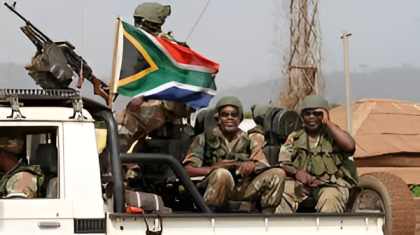Troops from the Southern African Development Community (SADC) have started leaving eastern Democratic Republic of Congo (DRC), marking the end of the regional military mission aimed at restoring peace in North Kivu.
Their withdrawal, beginning through Rwanda, was confirmed on Tuesday after images and videos of troops moving out circulated widely online.
The SADC Mission in the DRC, known as SAMIDRC, was launched on December 15, 2023, to help the DRC government fight armed groups destabilising the region.
It was formed shortly after the East African Community Regional Force (EACRF) pulled out.
SAMIDRC took a more forceful approach than its predecessor, opting to directly engage the militants operating in the volatile eastern provinces.
SADC had promised to send 5,000 troops from member countries with the aim of "intervening and providing regional support in the DRC to neutralise negative forces and armed groups in eastern DRC and restore peace and security in the country."
This mission was expected to benefit from the experience of the Force Intervention Brigade (FIB), which had been successful in the past.
The FIB, made up of soldiers from Malawi, Tanzania, and South Africa, had played a major role in stabilising eastern DRC in 2013 by pushing back the M23 rebel group, leading to a long period of relative calm.
SAMIDRC troops, mostly from South Africa, Tanzania, and Malawi, began arriving around Sake and other parts of North Kivu near Goma in December.
They launched combat operations even after M23 captured Goma in January, a development that left the SADC forces exposed and in a weaker position.
During the deployment, the mission faced heavy casualties and equipment losses.
It also struggled to reclaim territory that had earlier been secured by the EACRF.
As the conflict wore on, concerns emerged over the mission's ability to deal with the renewed strength of M23, which had become better organised and more heavily armed.
While some officials pointed to inadequate planning and preparation, the South African Defence Minister rejected these claims. "Adequate pre-deployment training had been conducted," she said, maintaining that troops had been ready for the assignment.
In February, SADC Heads of State held an extraordinary summit to evaluate the mission’s progress.
The meeting ended with a conclusion that SAMIDRC had not succeeded in its mandate of restoring peace or defending the region’s territorial boundaries.
One month later, SADC agreed to withdraw its forces from eastern DRC.
The decision was based on the understanding that military action alone could not end the conflict in the region.
Diplomatic and political solutions would also be needed.
To allow for an organised exit, SAMIDRC and the M23 agreed on a ceasefire. As part of this arrangement, both sides worked together to coordinate the withdrawal process.
M23 fighters were tasked with monitoring the movement of the departing troops to avoid any new confrontations during the handover.

